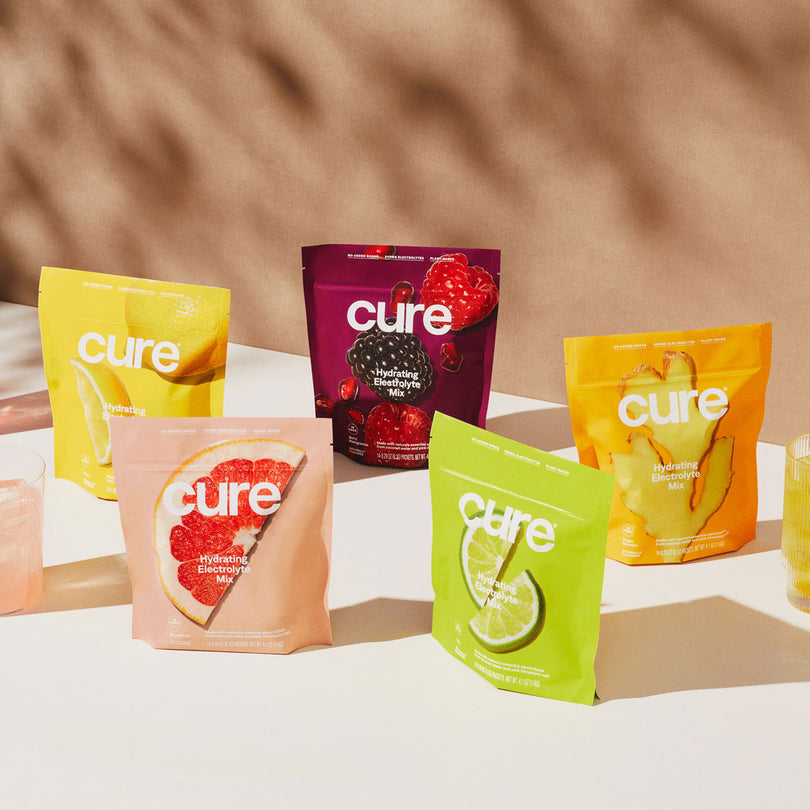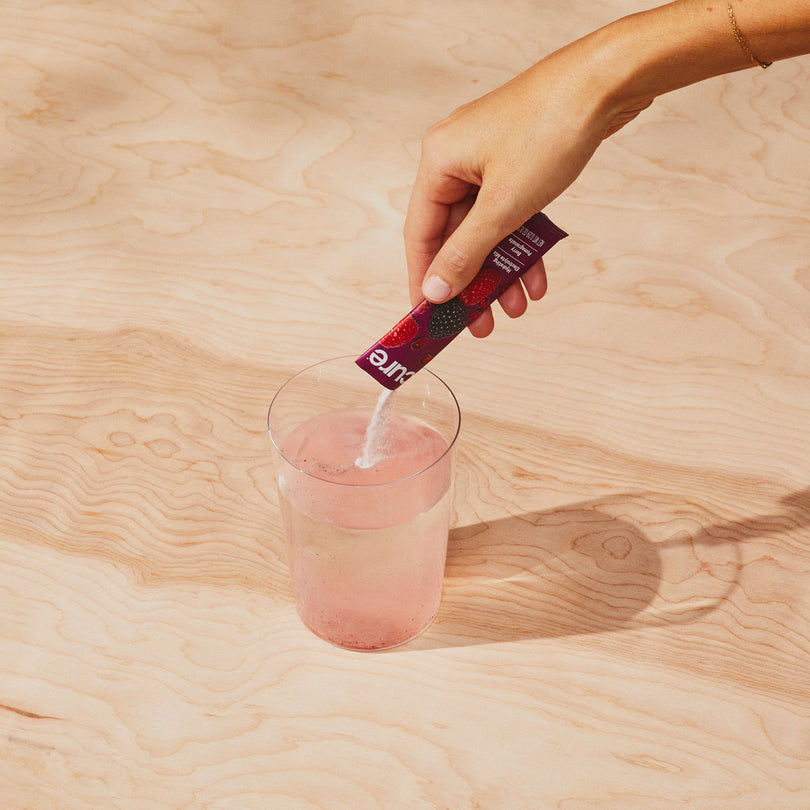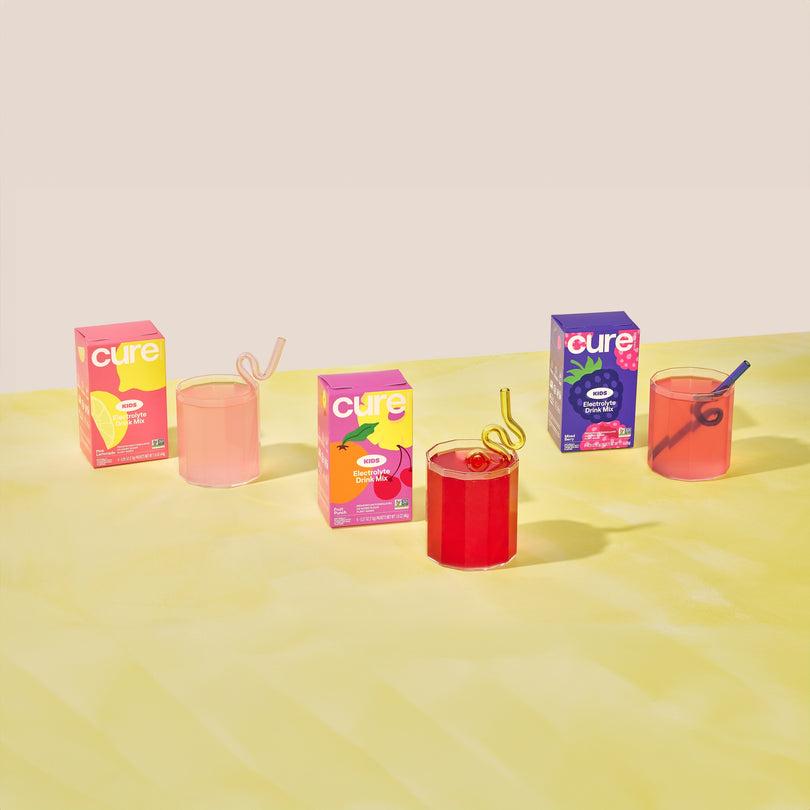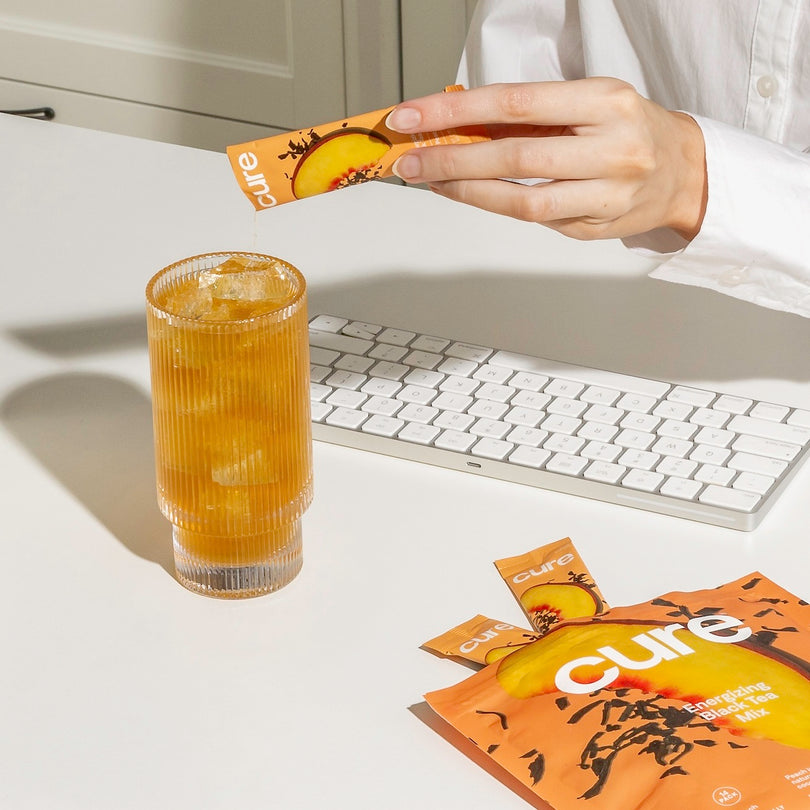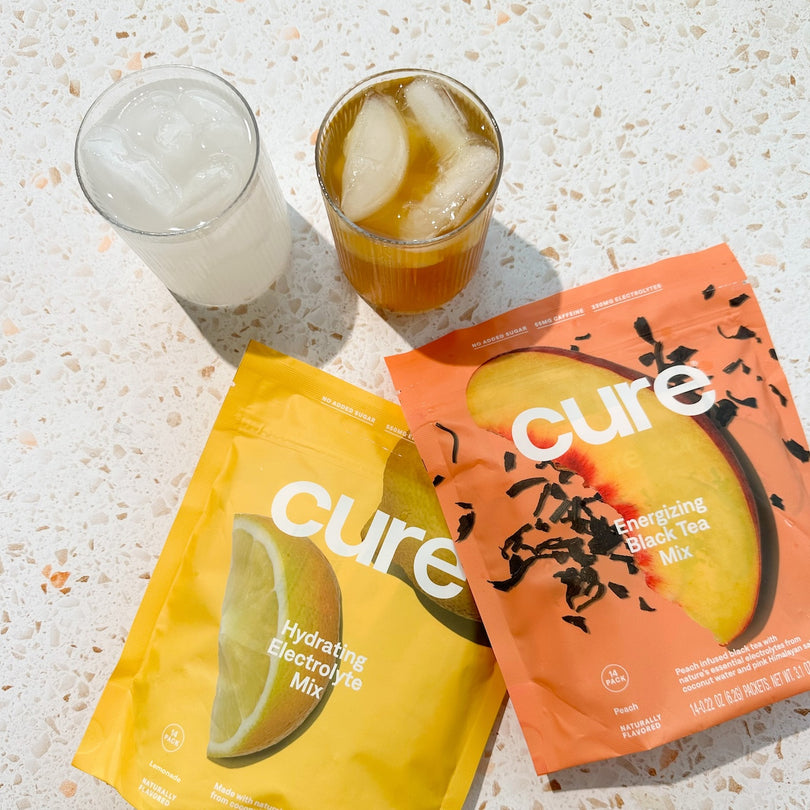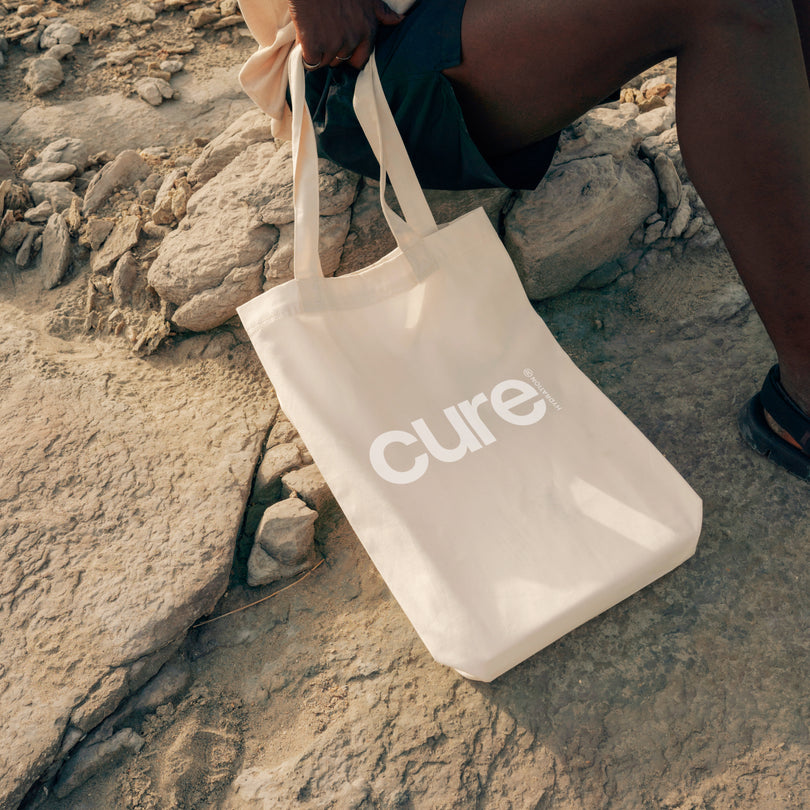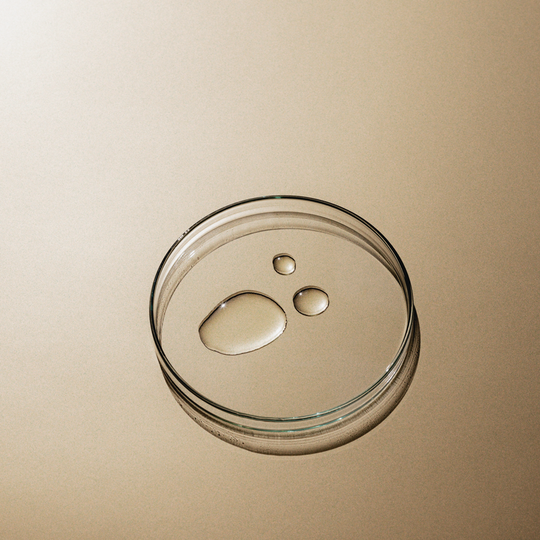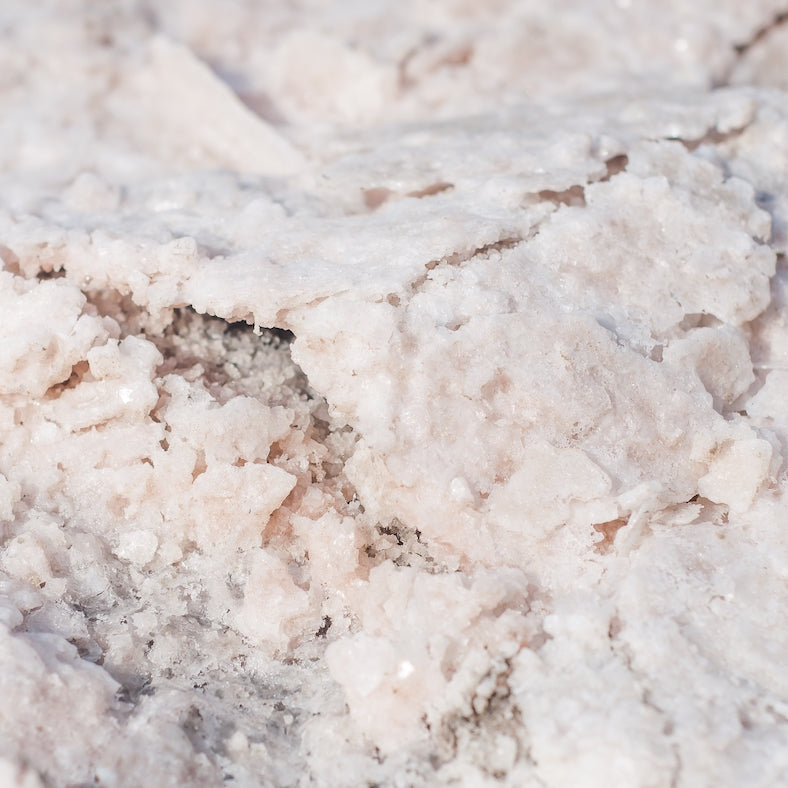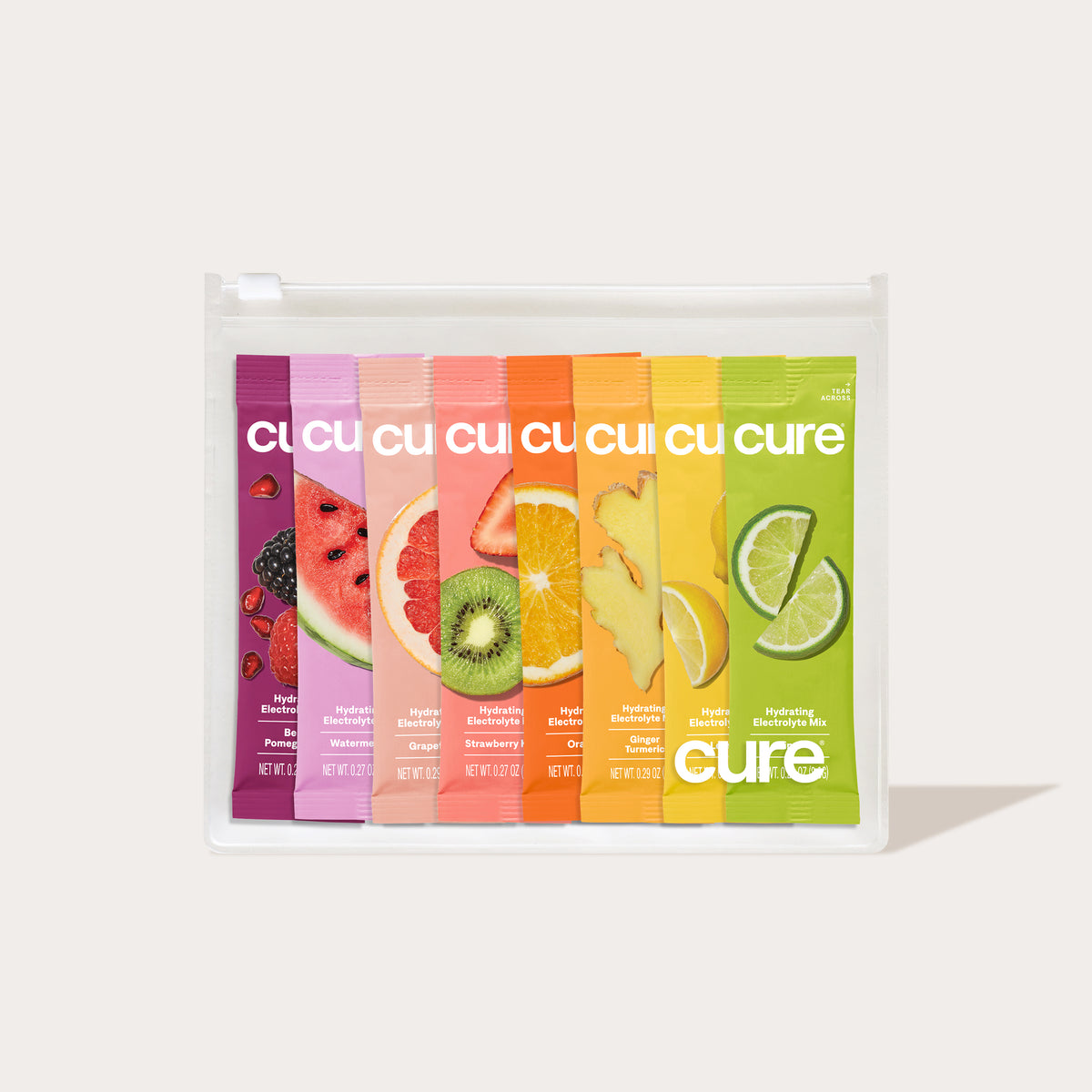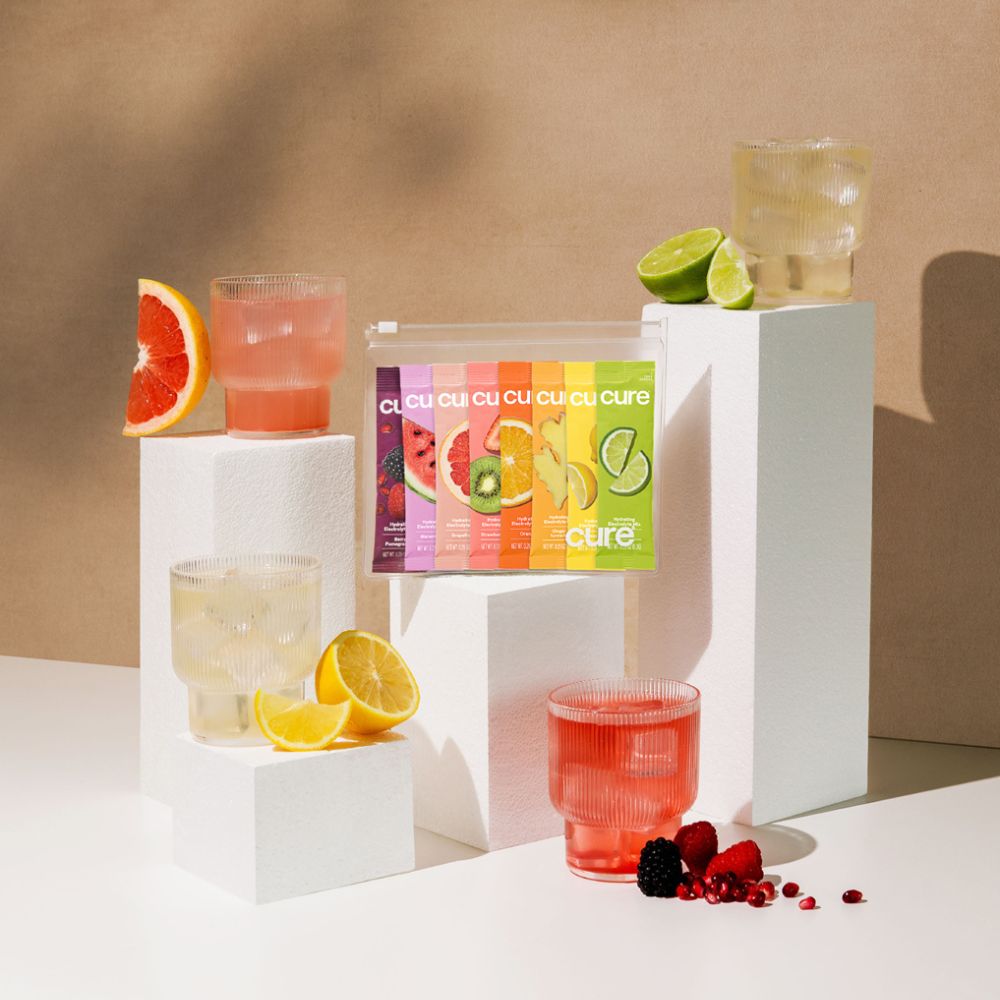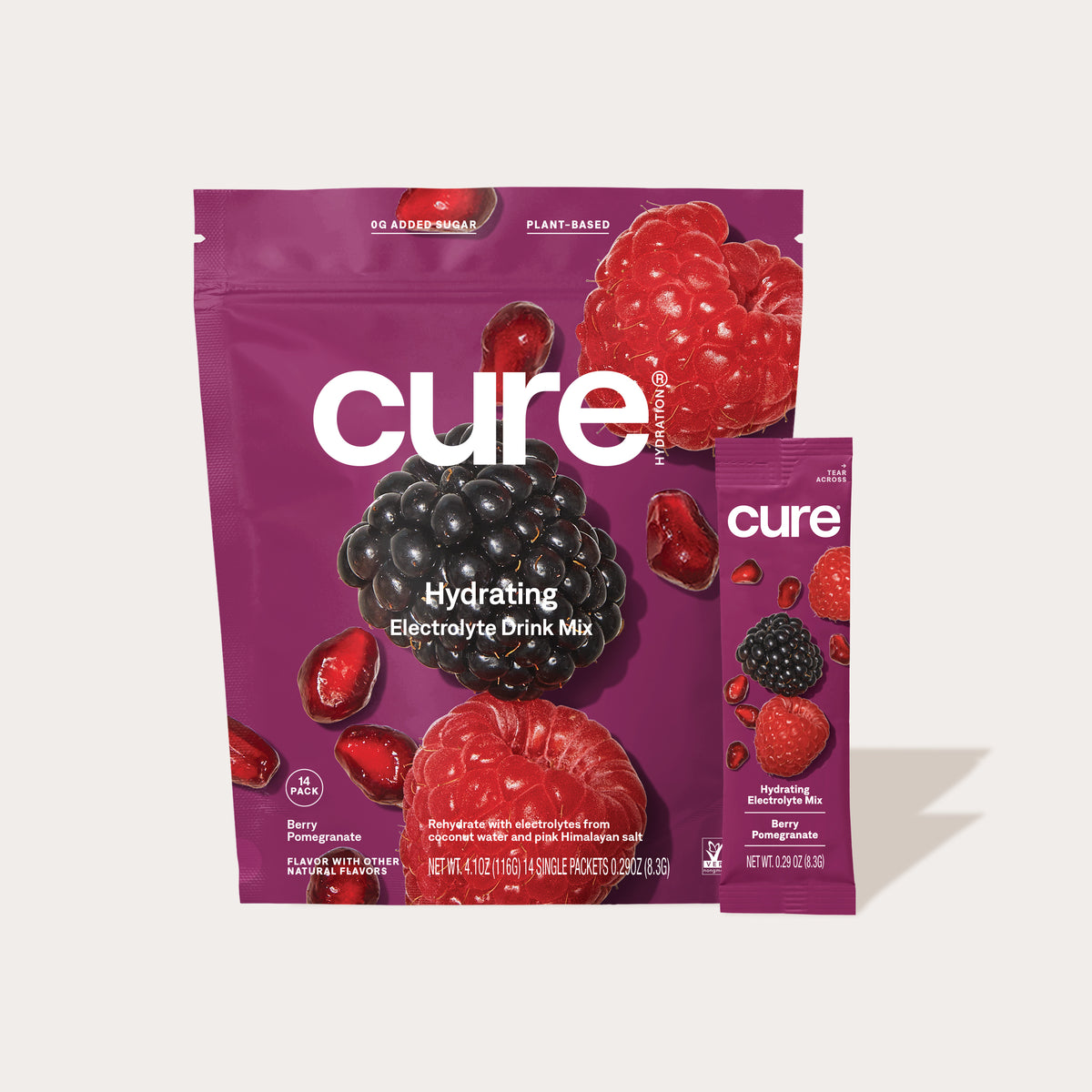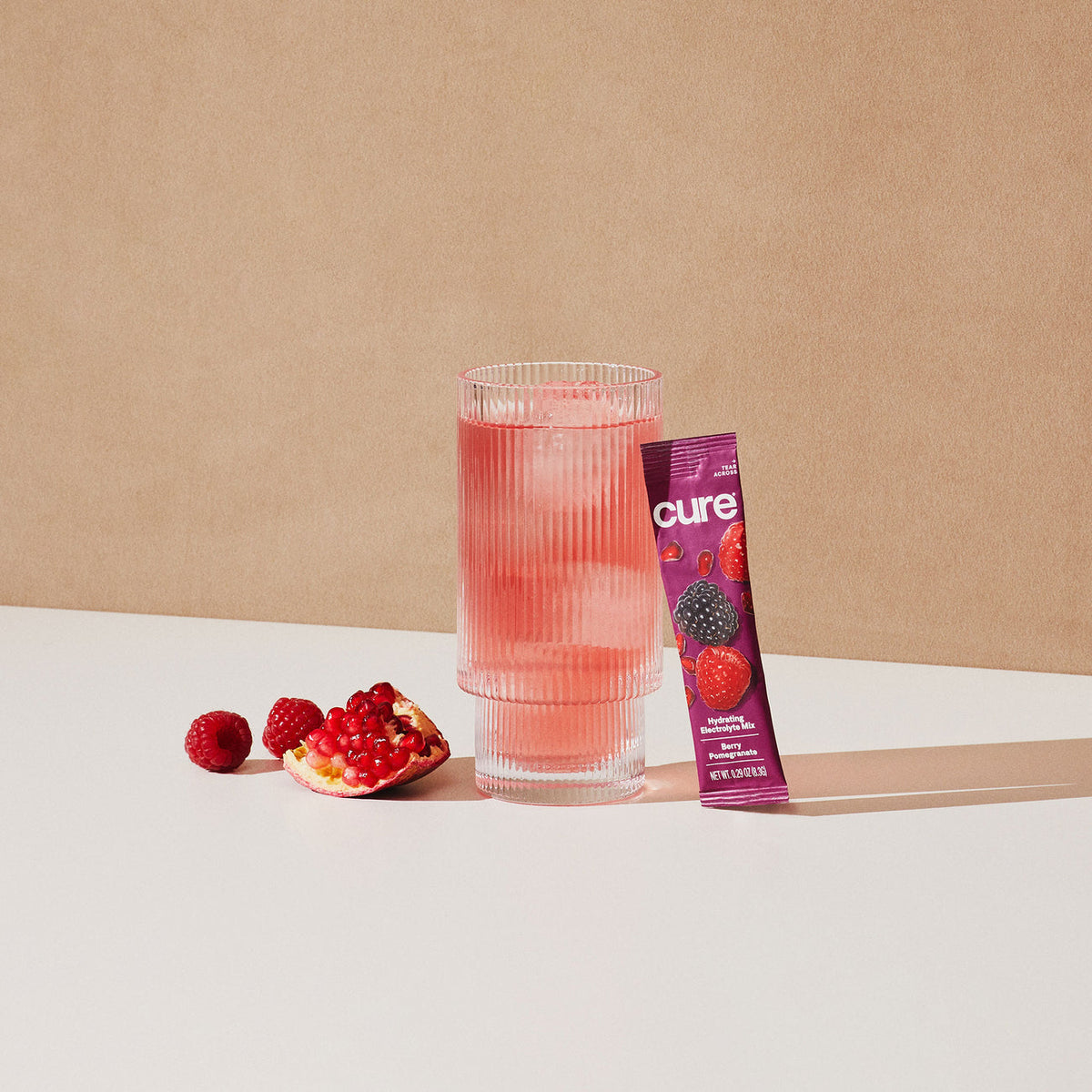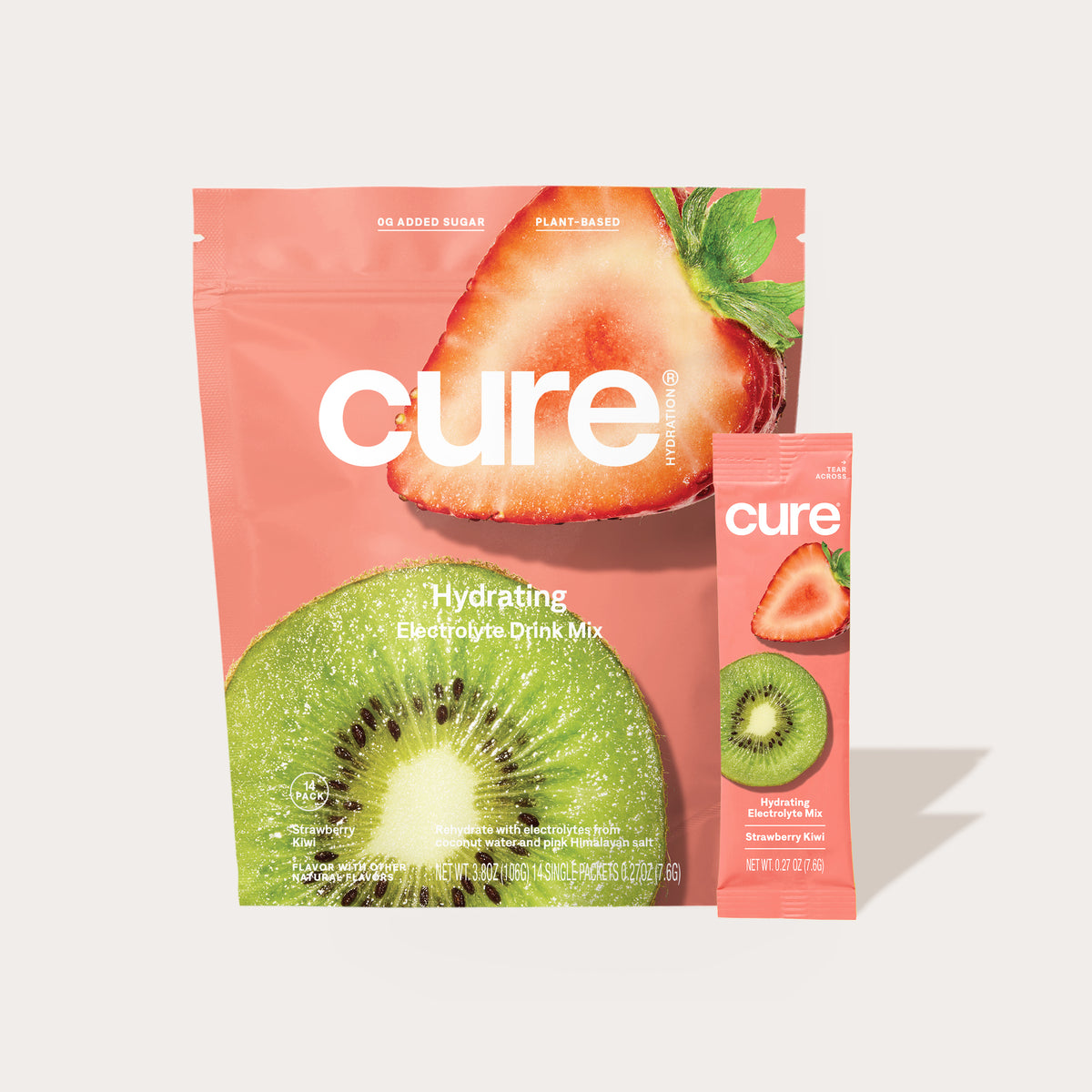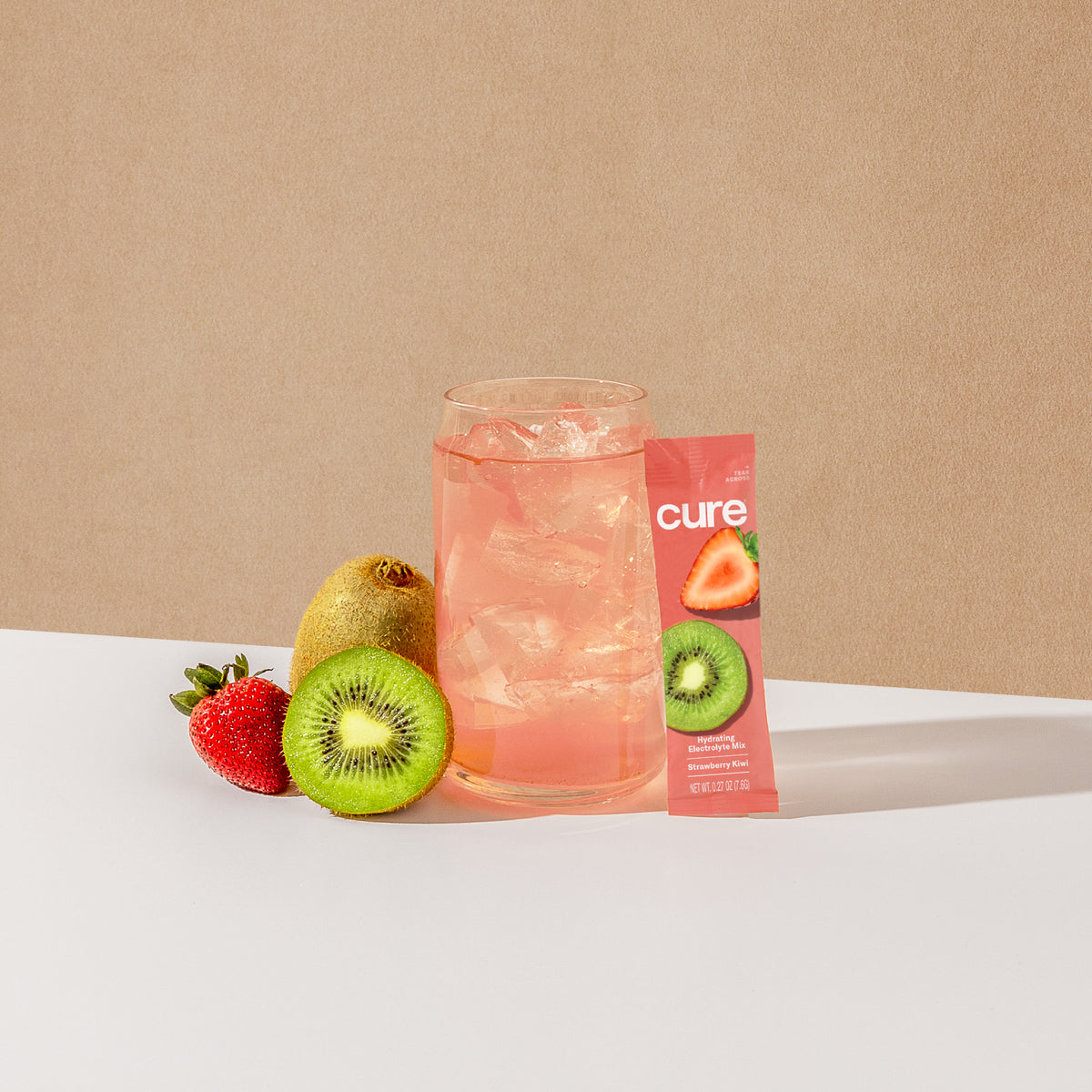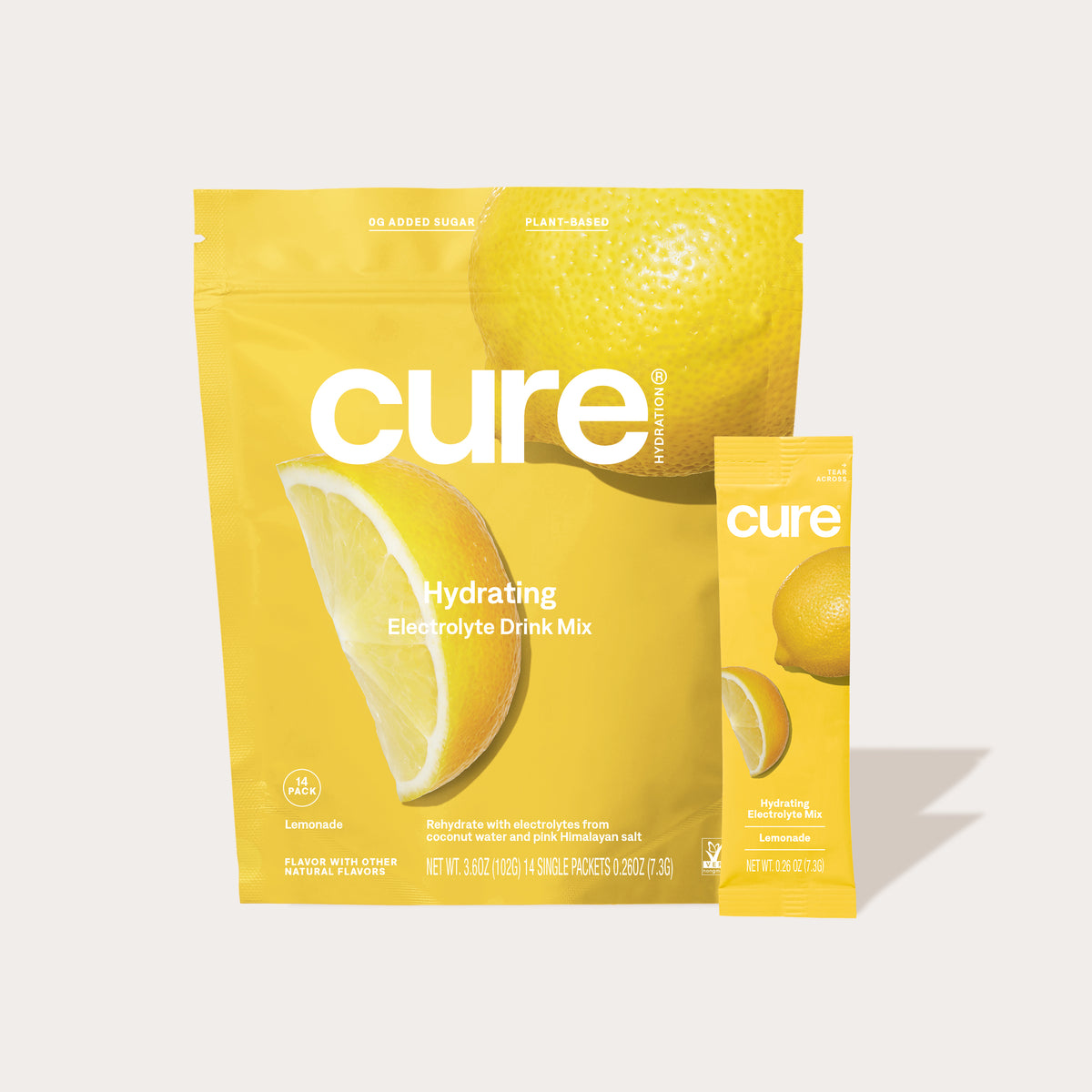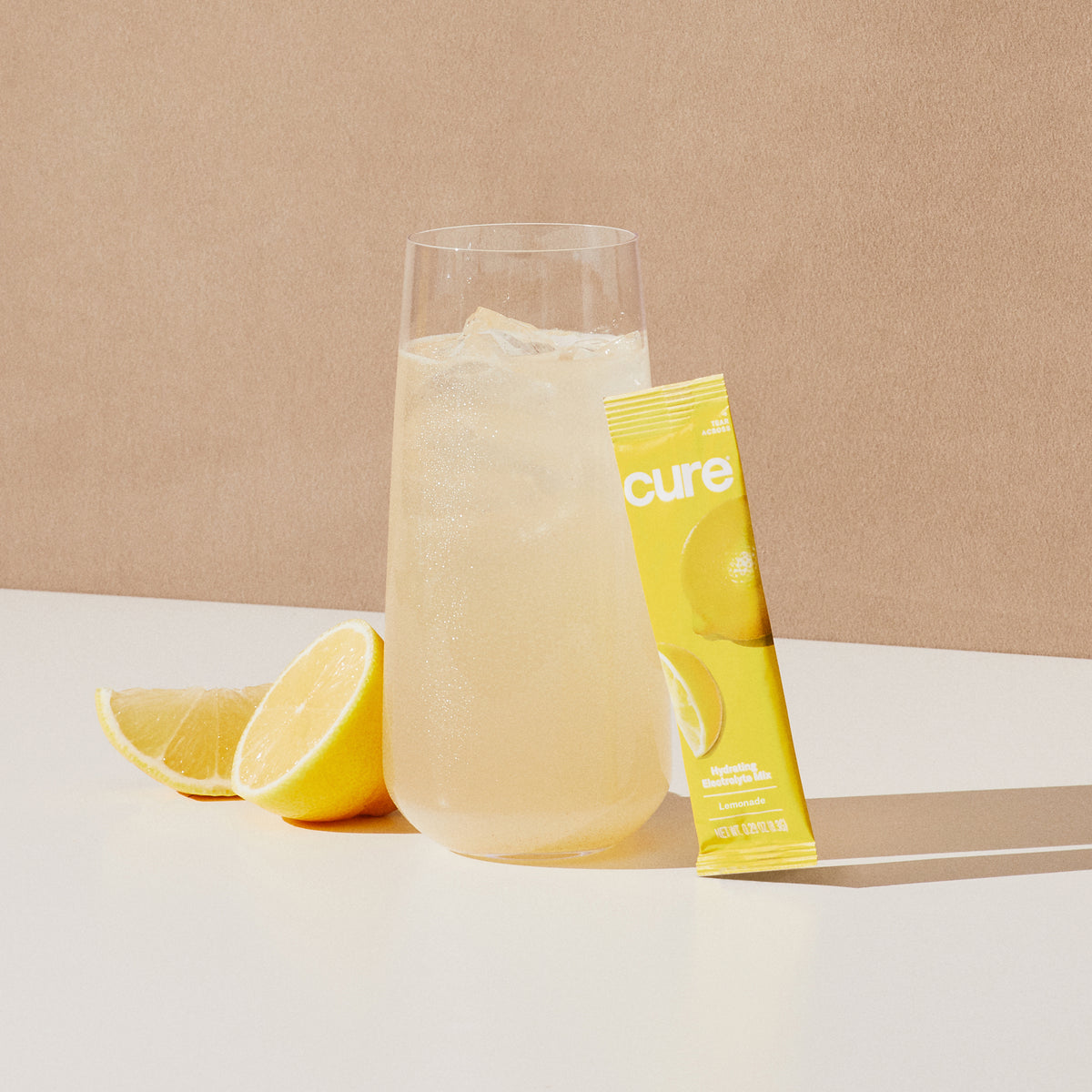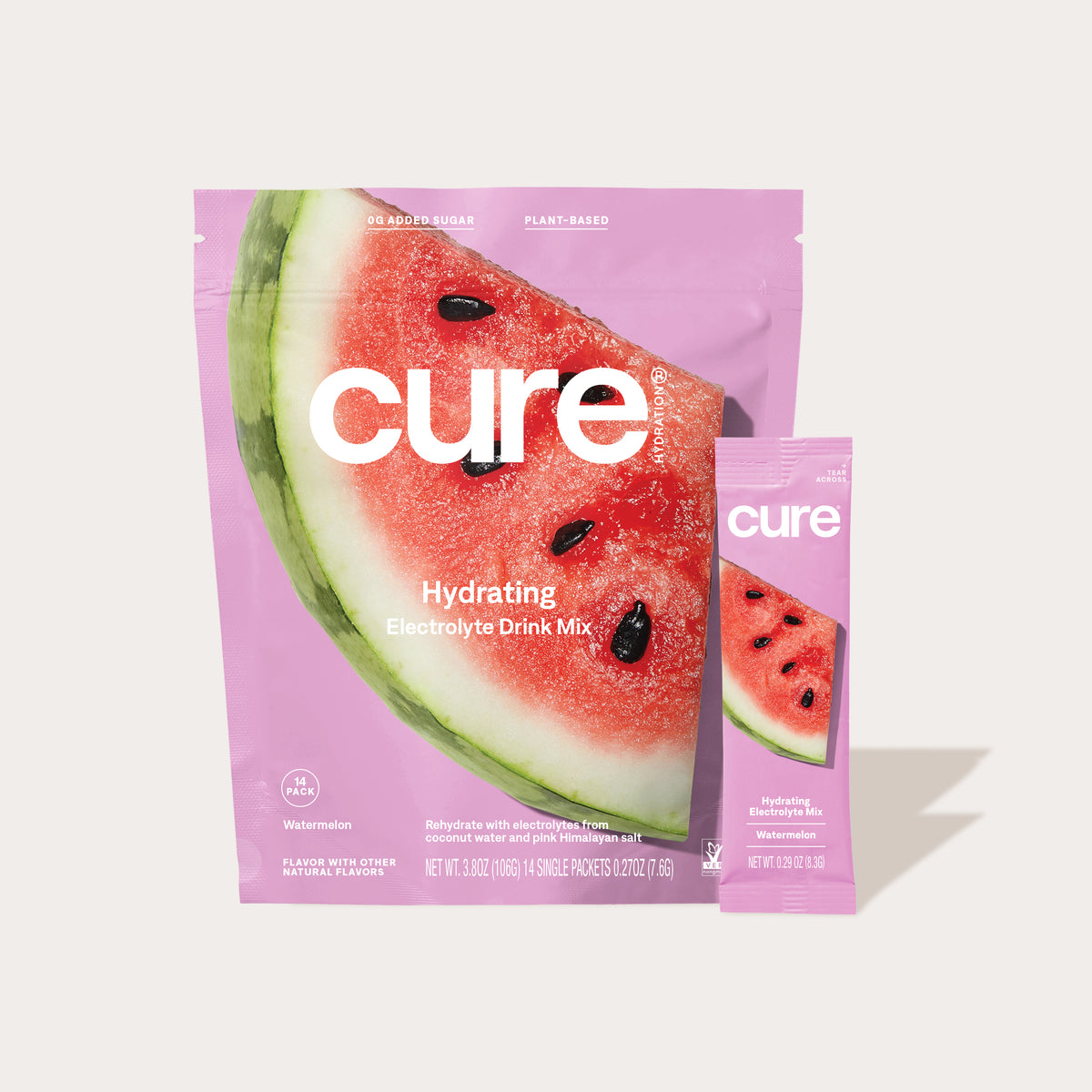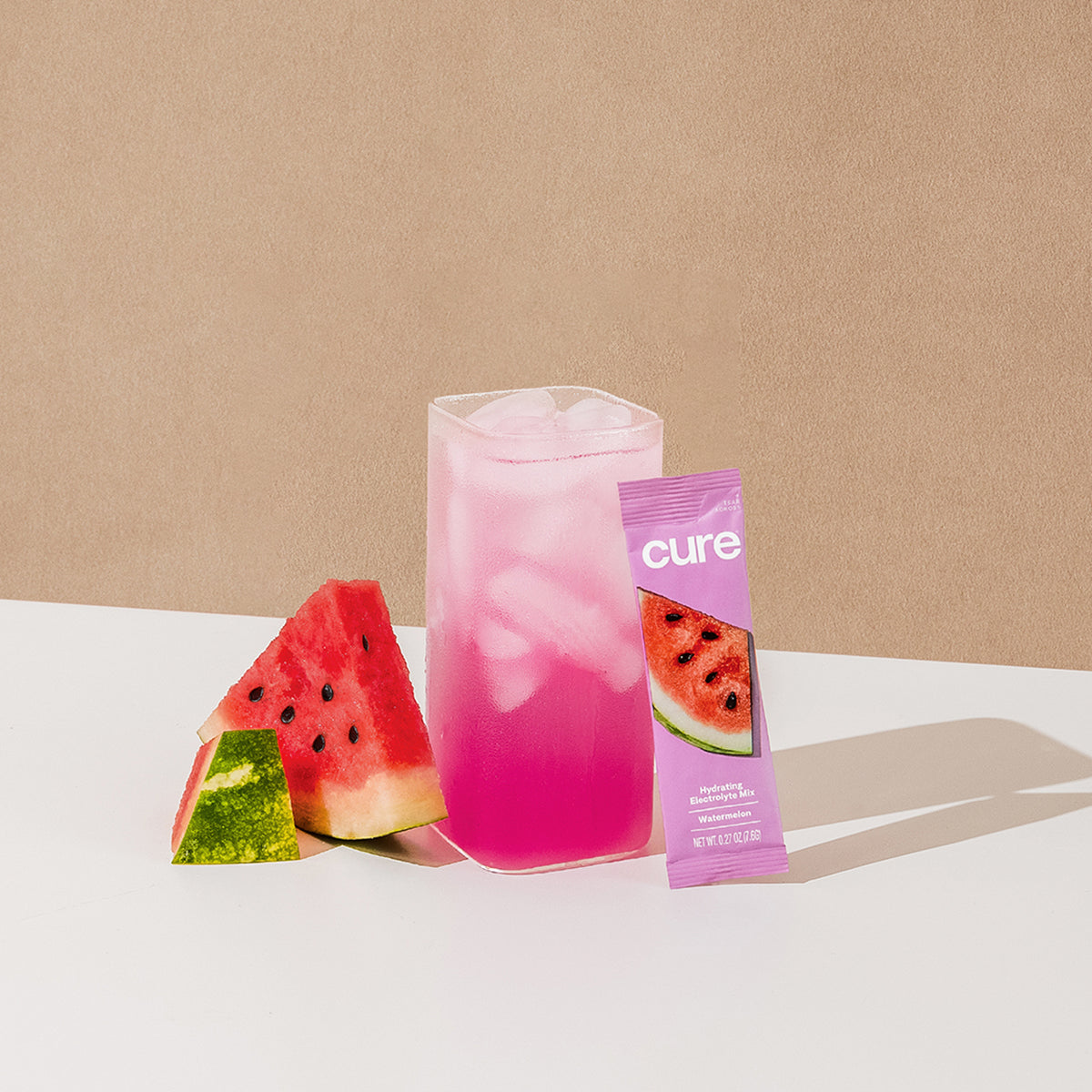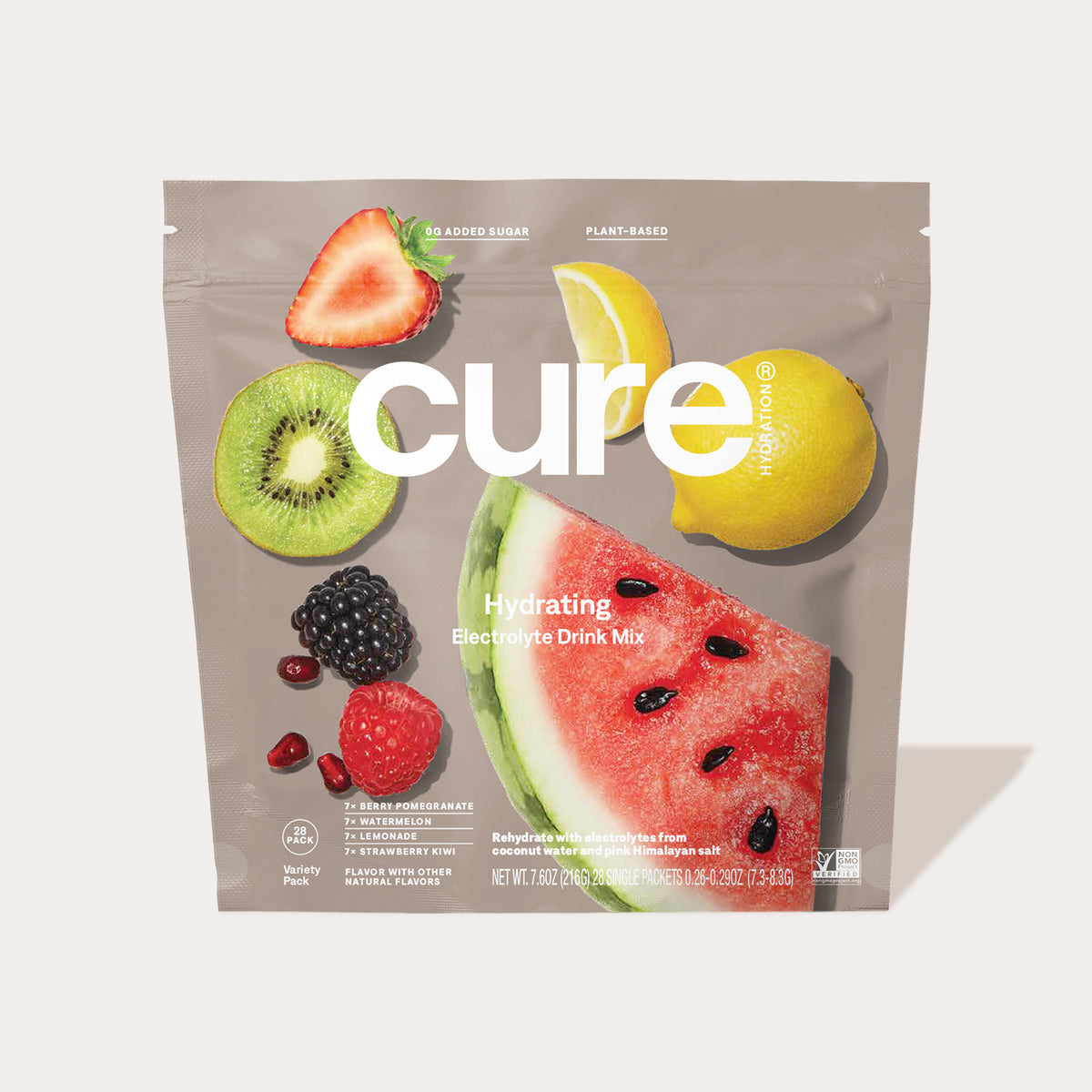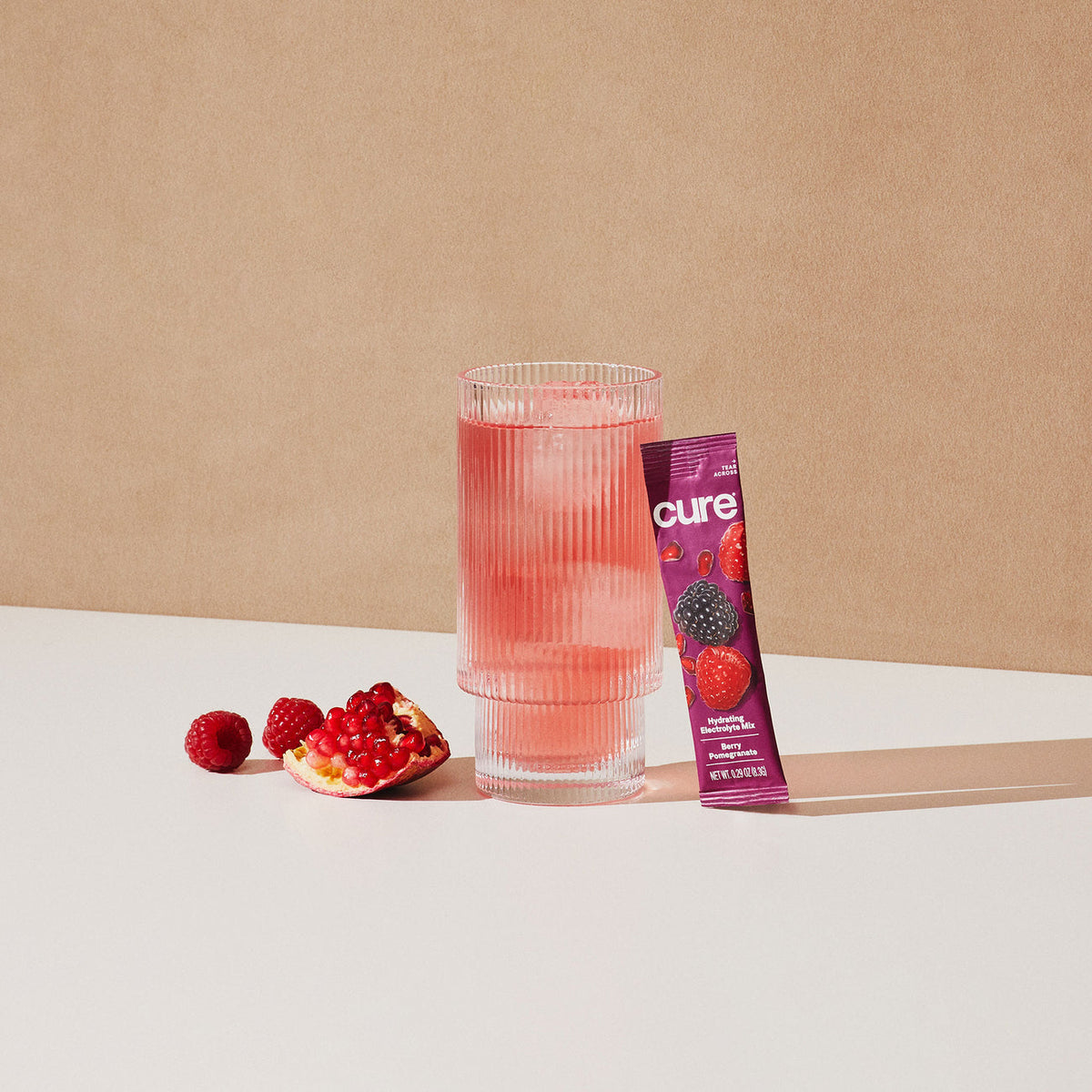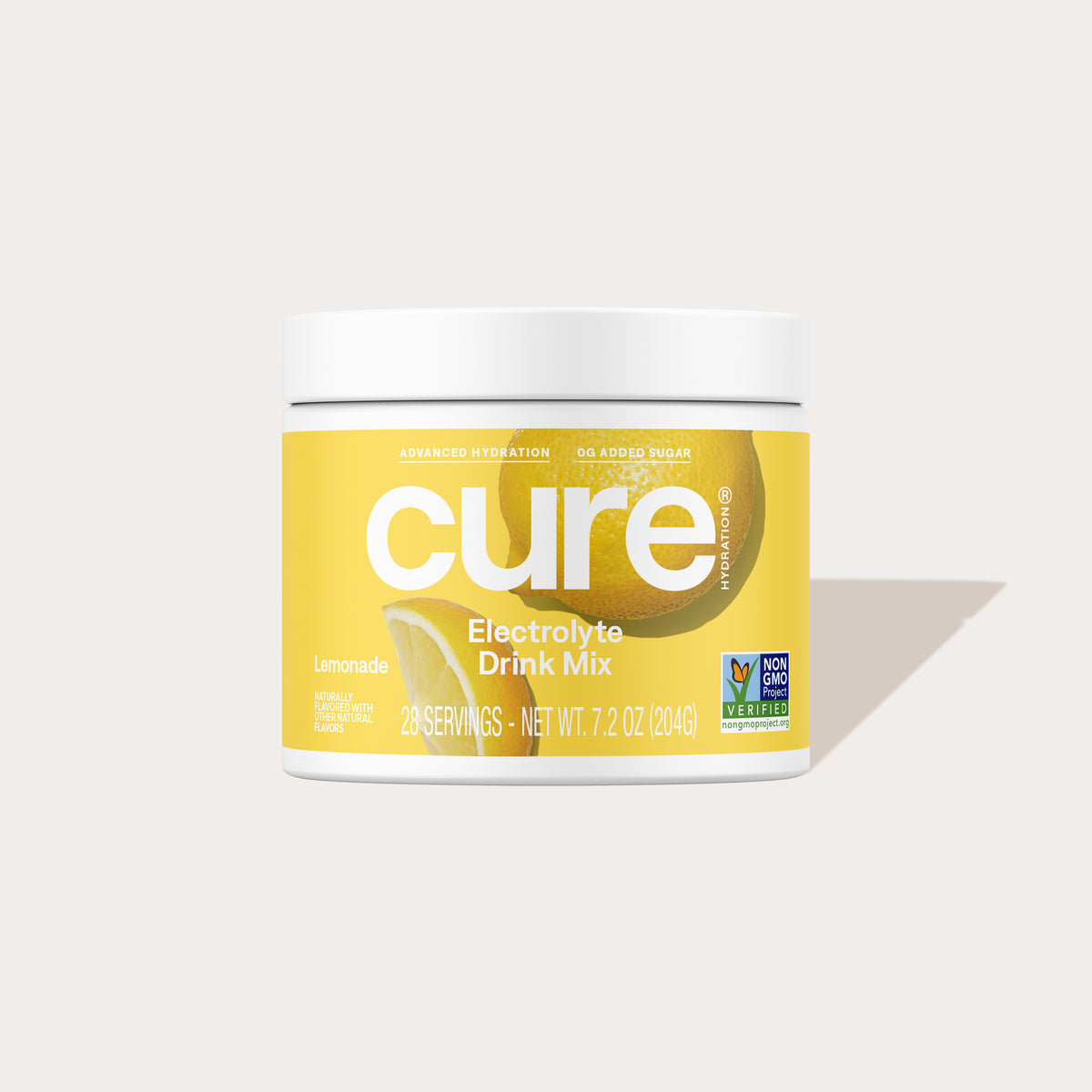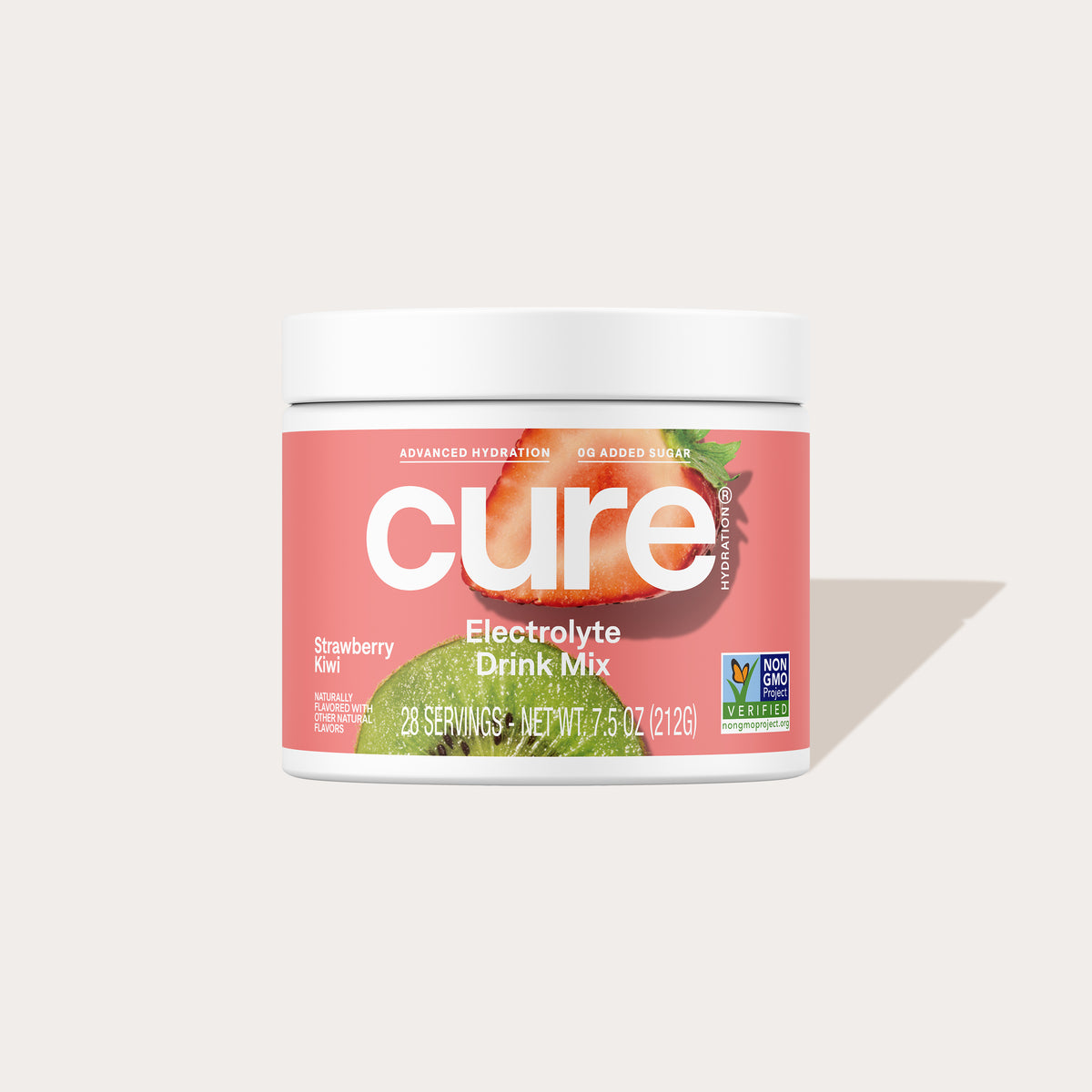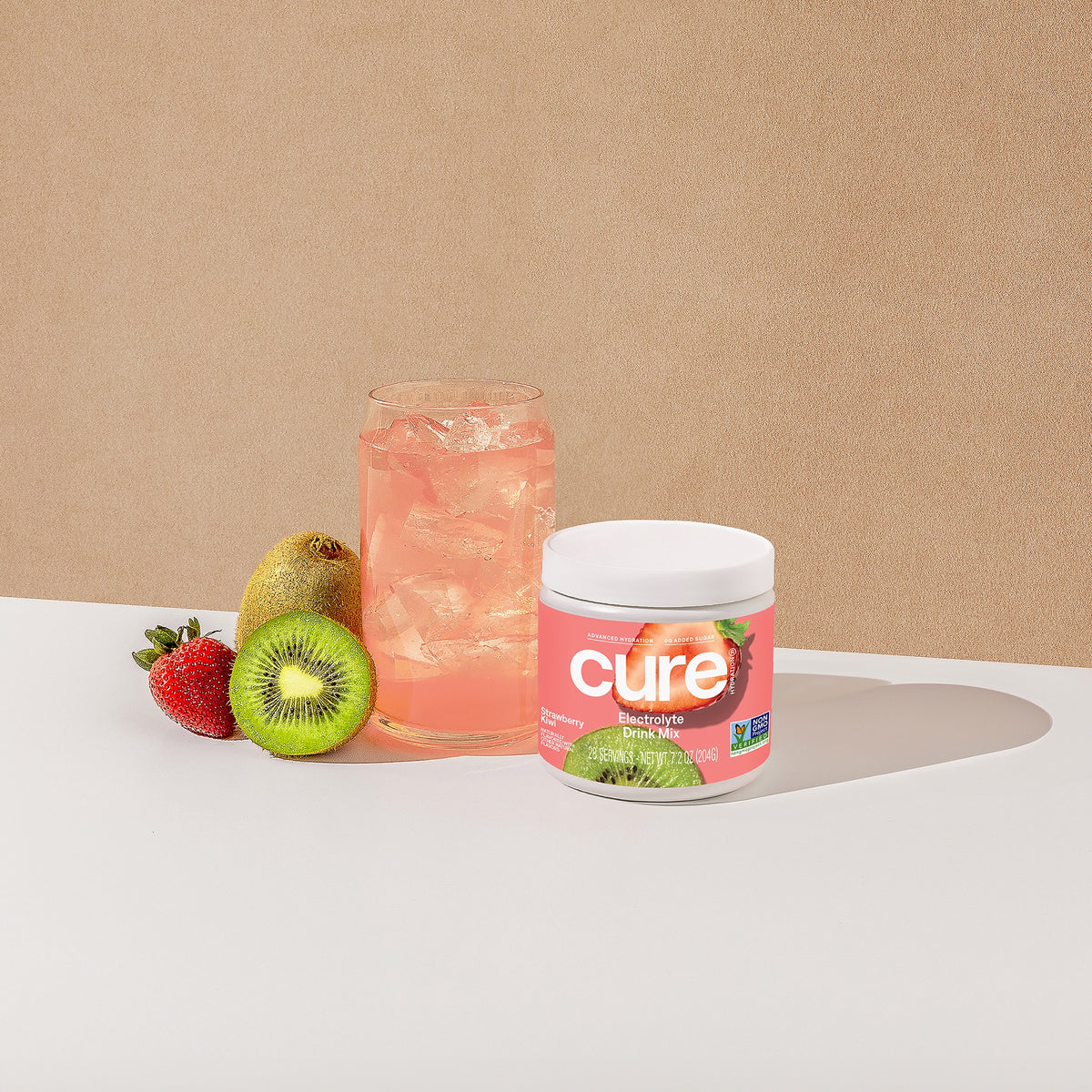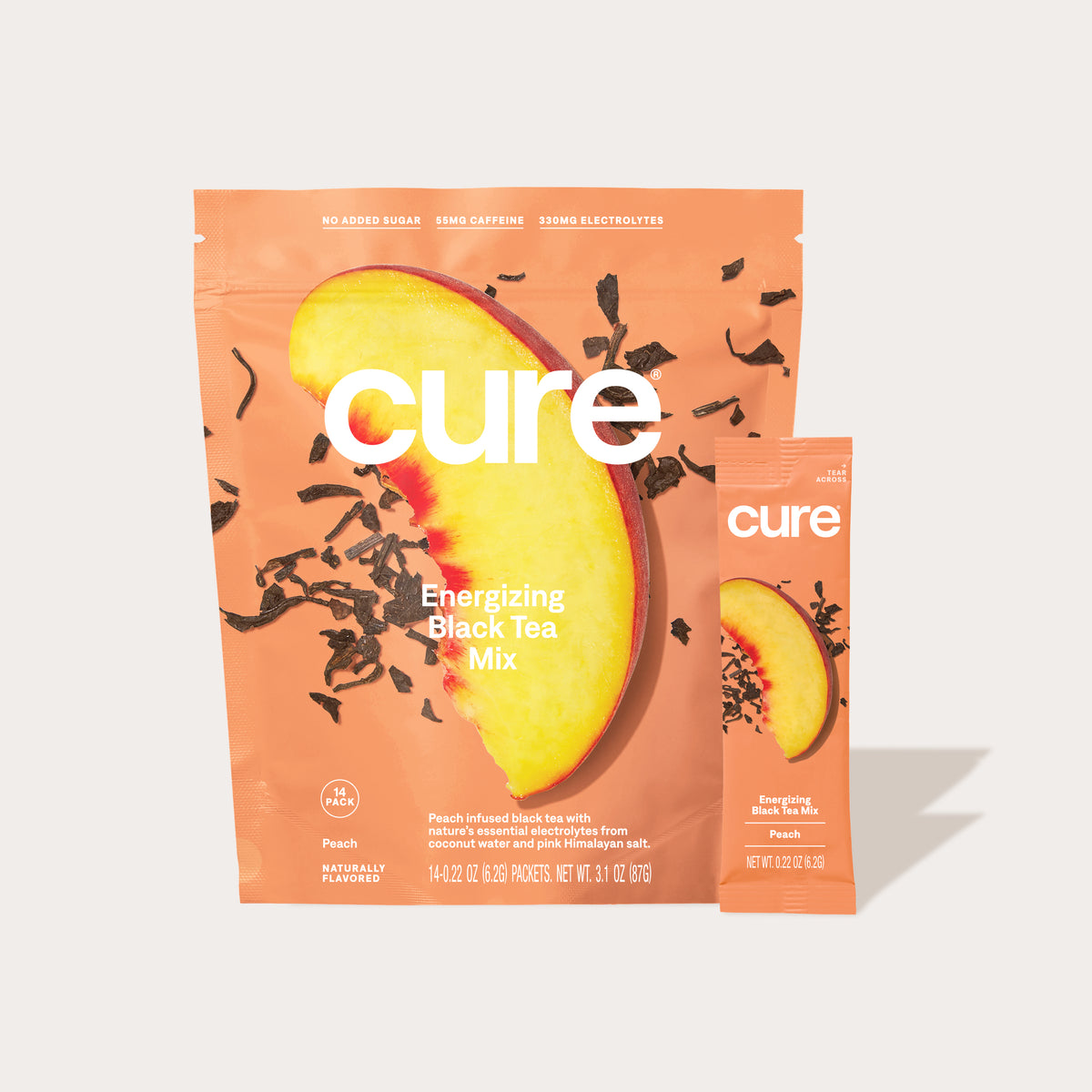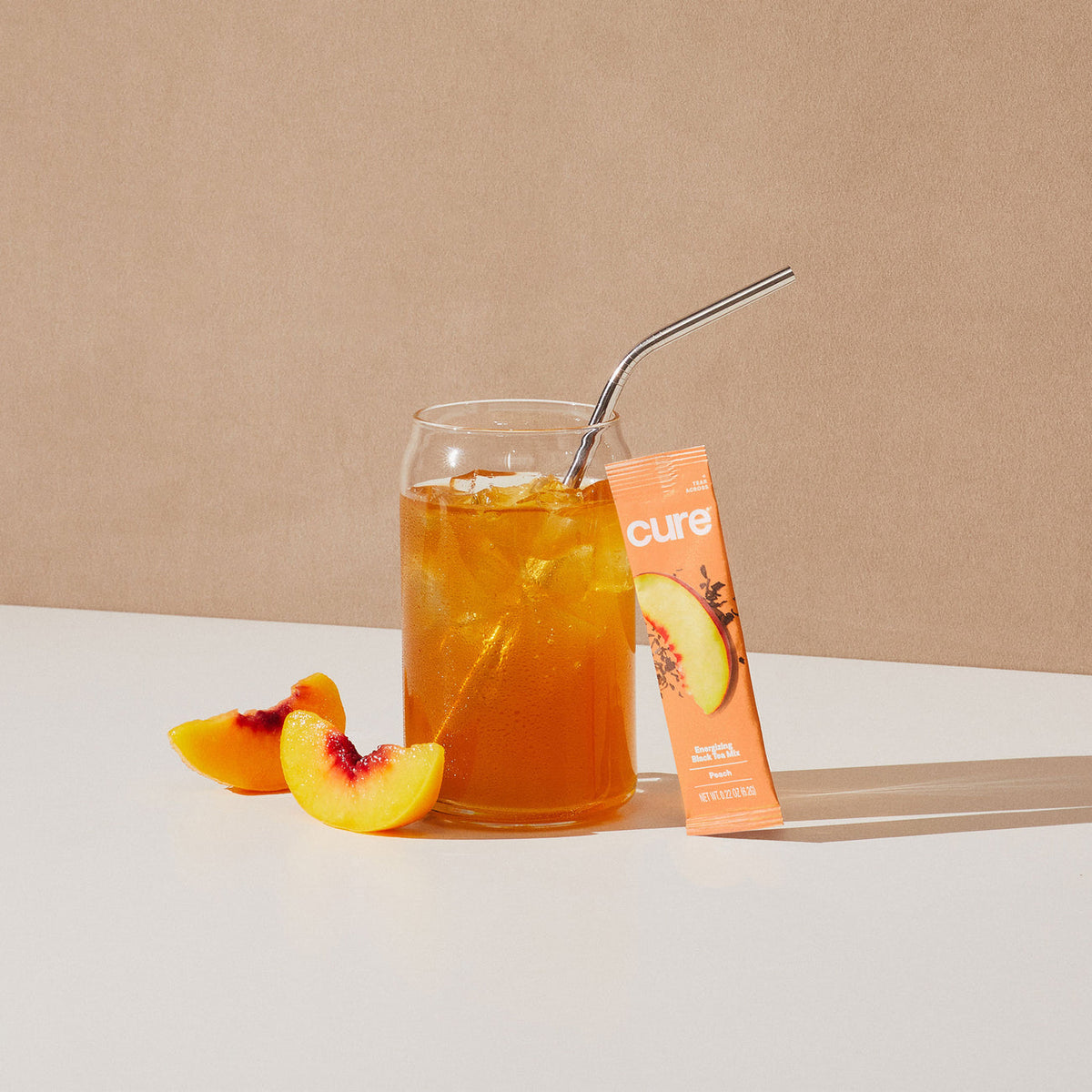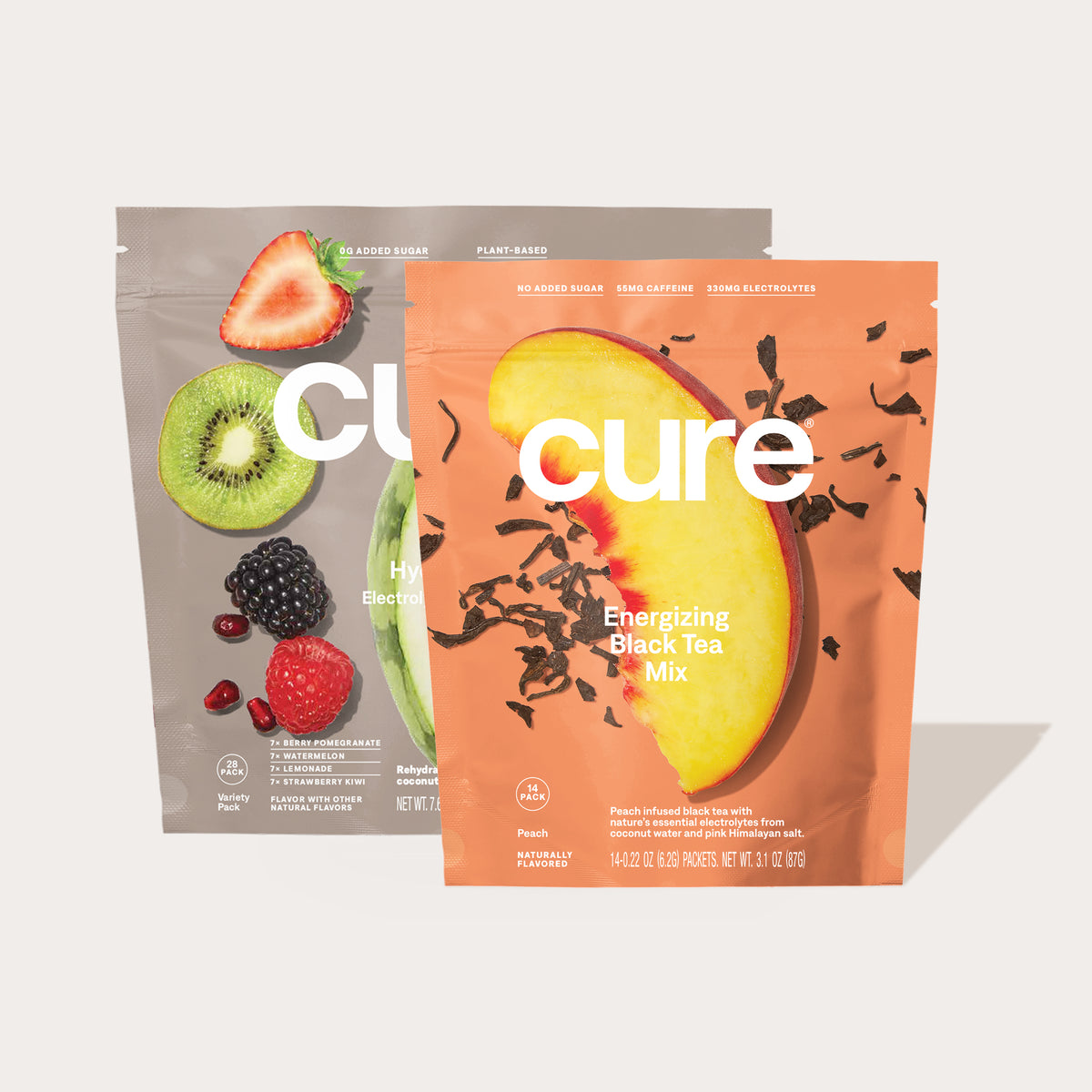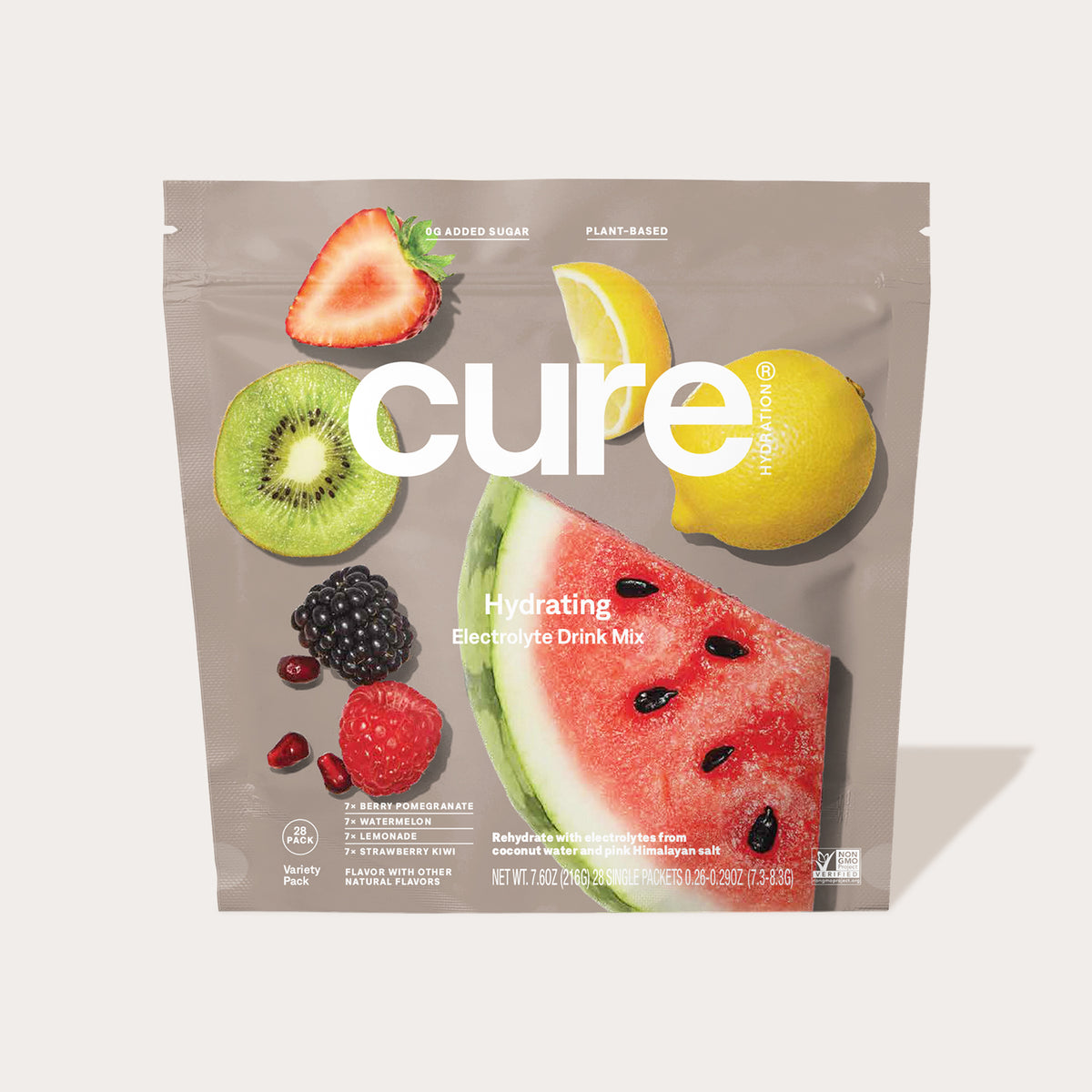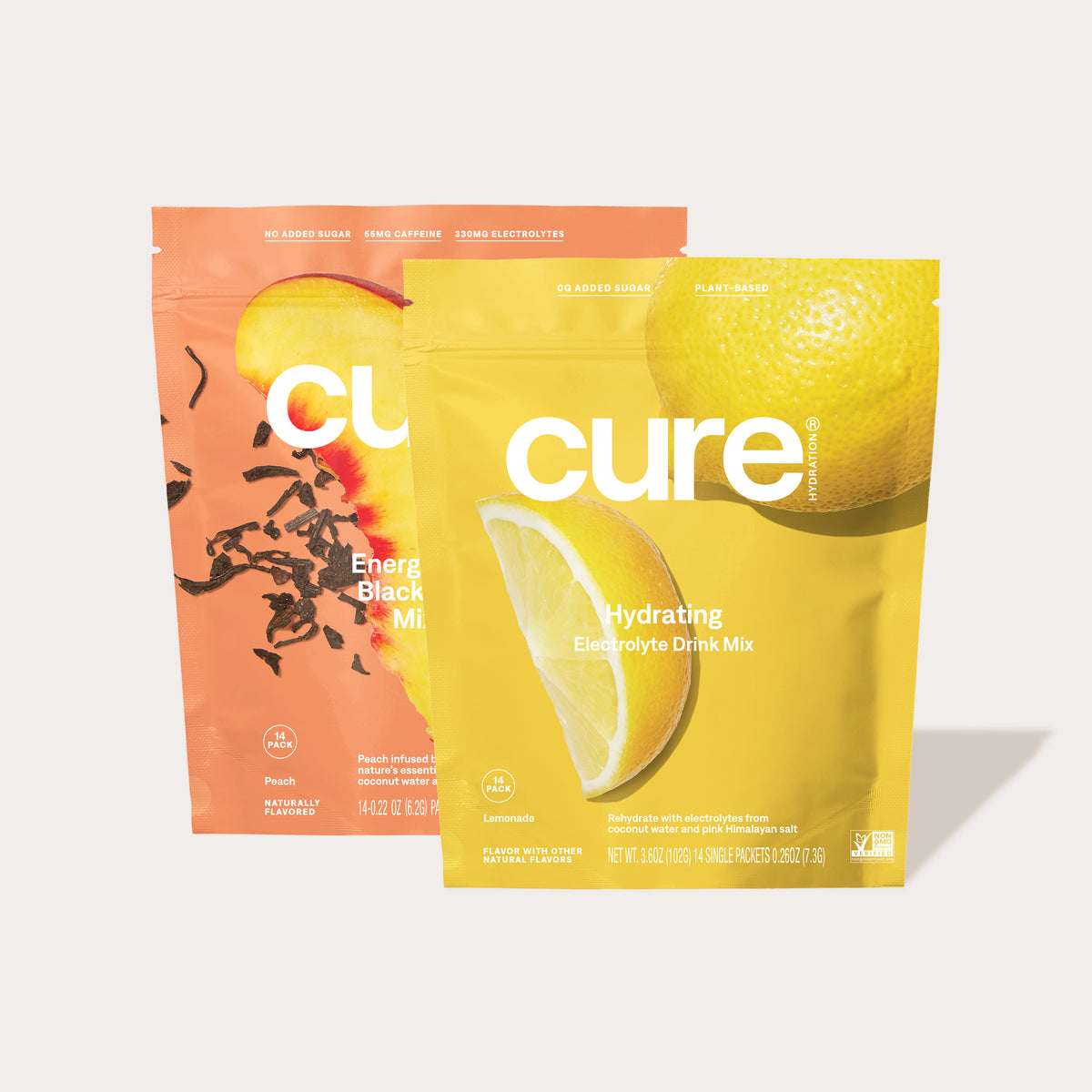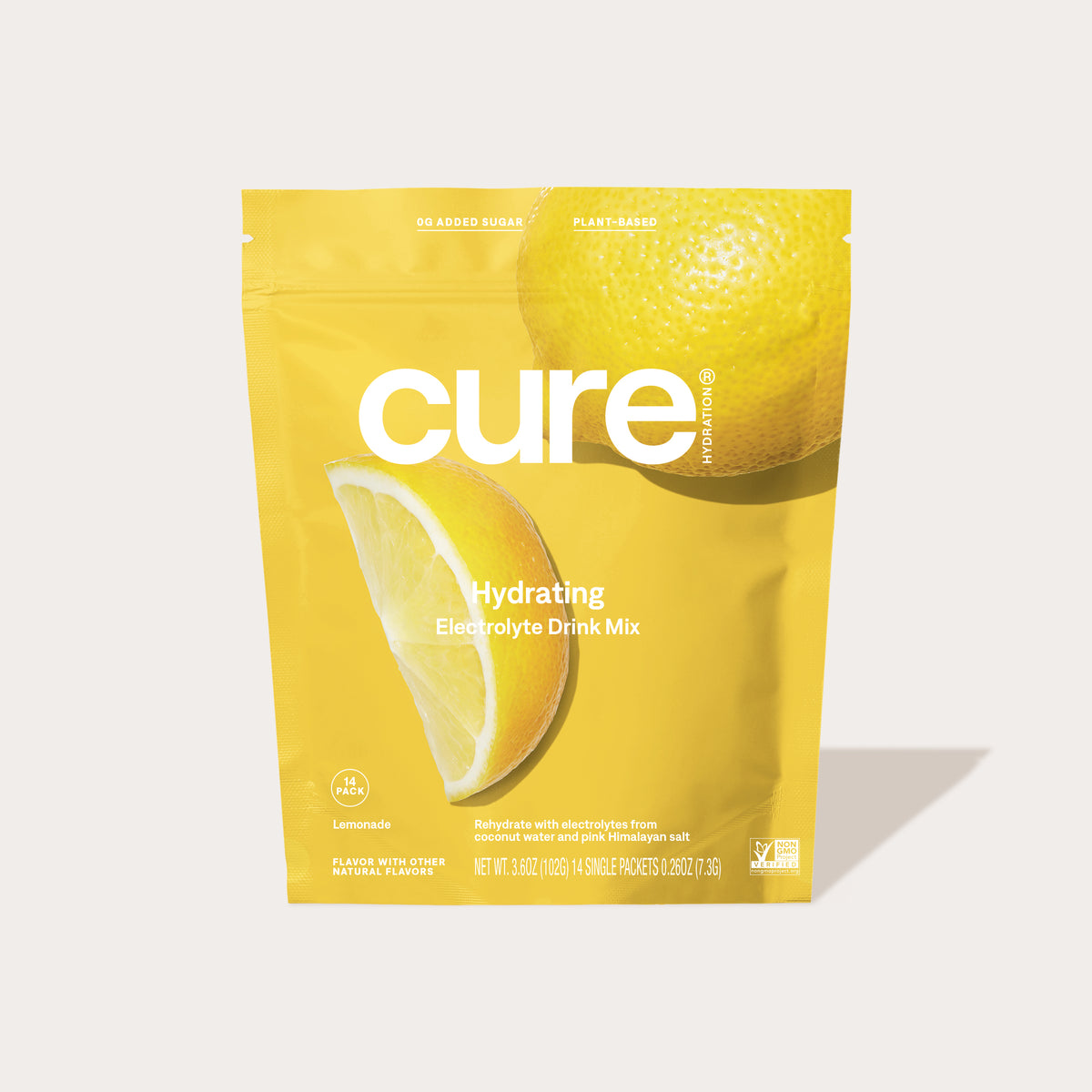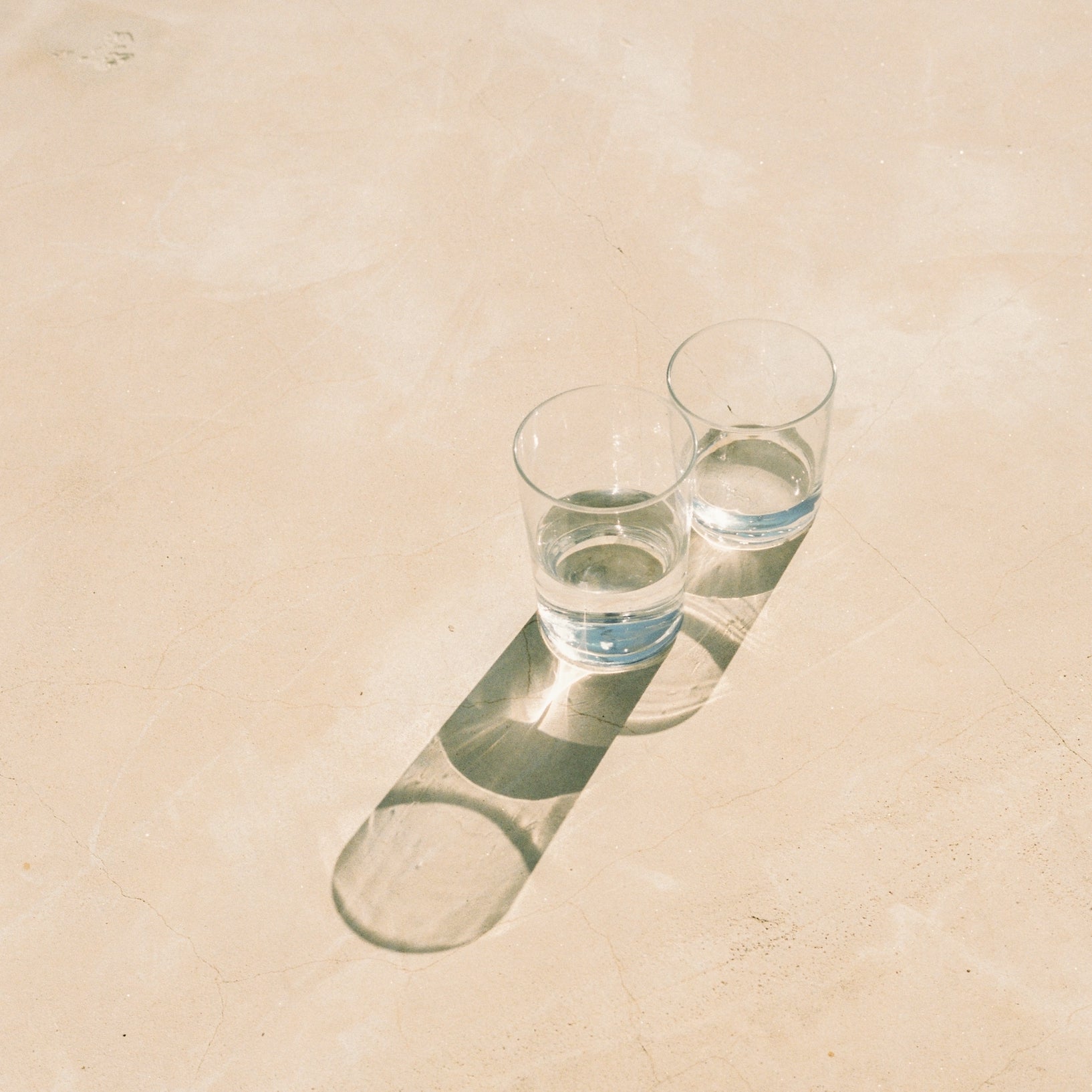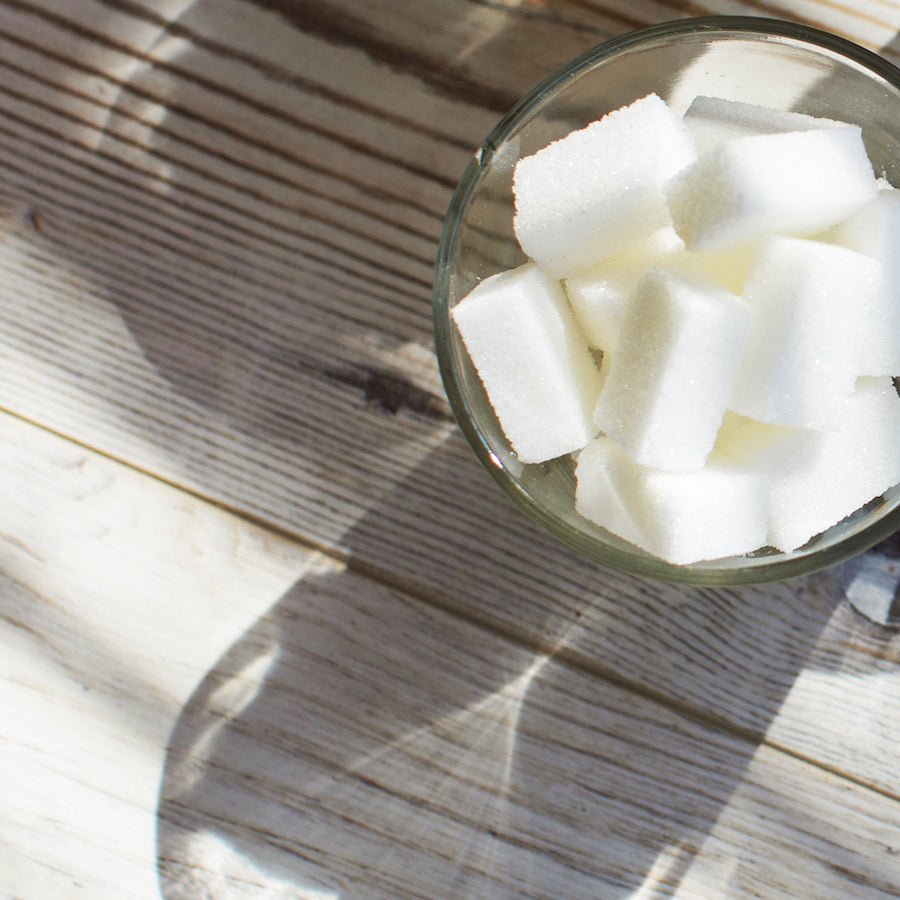In this article:
- What Is Refined Salt?
- What Is Unrefined Salt?
- Which One is the Better Choice?
- But Isn't All Salt Bad for You?
- Why Is Salt So Important?
- Is There Such Thing as Too Much Salt After All?

Salt seems like it’s in everything. Despite that, we’re told to avoid it at all costs or at least cut down on it at every given opportunity. But at Cure, Pink Himalayan salt is one of the three main ingredients we include in our products. On purpose.
That might seem rebellious of us to do. Salt? For hydration? We promise it’s actually for a great reason. Still, to understand why we choose pink Himalayan salt over regular table salt, you’ll need to understand the differences between refined and unrefined salt.
Plus, why is one ultimately a better ingredient than the other? If you don’t already know the answer, we’ll be happy to answer it for you!
What Is Refined Salt?
Refined salt is the typical table salt you buy at the store. It can only be found by mining underground and is heavily processed to prevent it from clumping together.
It will probably also include iodine, a mineral used to repel any potential toxins from the salt and to maintain healthy thyroid function. Another thing about refined salt is that it is heated and processed before hitting the shelves, potentially removing some of the other vitamins and minerals in unrefined salt.
What Is Unrefined Salt?
Unrefined salt is created in one of two ways: mined directly from the source or taken from evaporated seawater. It maintains its natural color due to not being processed like refined salt and maintains much more of its natural form this way. Because it is not as milled down as table salt and is often the size of small pebbles. Unrefined salt has a more coarse texture, but that doesn’t affect the way it tastes.
Many people love unrefined salt for its unique taste and ability to enhance their homemade recipes!

Which One is the Better Choice?
While refined salt isn’t the worst choice for you (especially if you aren’t getting enough salt in the first place), unrefined salt has more to offer. For one thing, many people prefer the stronger, earthier taste of unrefined salt. While refined and unrefined salt typically has the same amount of sodium, unrefined salt offers minerals that are squeezed out of refined salt.
If you don’t like saying goodbye to magnesium, potassium, and other electrolytes in salt, don’t rule out the benefits of unrefined salt!
But Isn't All Salt Bad for You?
It turns out we've been led astray by misinformation about salt. Not even scientists totally agree over the common “don’t eat salt” narrative we’ve heard about. Between that, other studies, and medical expert advice from our Cure Medical Advice team, there is a good reason to question what you’ve heard.But the beautiful thing about science is that it always wants to be its best self, and with more recent discoveries, it turns out that salt isn't some evil being out to destroy our health.
As a matter of fact, it's vital to our survival in the world and has been for centuries. That’s why even when you drink a bunch of water, you may still feel thirsty, fatigued, or downright terrible, despite doing everything you’re supposed to do.
Salt contains both sodium and chloride, two electrolytes needed for organ and joint function. Plus, get this; it’s essential to hydration. We know, take a moment to process that. Without sodium and other electrolytes, your body can’t move as well, and your brain has a hard time keeping up with all the things you need to do. So if you’ve been forgetting your good shirt at the gym or losing important items, think about if your brain is able to be at its best.
While we're not suggesting you go overboard with overly salty foods and throw everything you know about nutrition into a mental dump, we do want you to reconsider the value of salt as part of your health routine.
Why Is Salt So Important?
Salt has been around for ages. But it hasn’t always been this easy to have access to it.
In Ancient West Africa, salt was their ticket to accessing much of the world's access to precious metals and other luxury materials. But their main goal was to obtain gold and lots of it. Salt was so valuable that Ghana, Mali, and Songhai could sell it in exchange for the gold, silver, cloth, and other fine materials they desired. They even made currency out of salt because it was that important.
If that sounds too good to be true, let’s look back in time for a bit and learn a little history lesson. (It’s brief, we promise!)
Between the 7th and 14th centuries, salt was in abundance in West Africa. But for the rest of the world, they didn't have the same access to salt supplies as West African traders. While the world was moving towards more plant and grain-based diets instead of strictly meats, they came across a big problem: they weren’t getting enough salt from their new diets. Plus, they noticed that their food was bland. Salt was also used to preserve meat and other foods during harsh weather or food shortages so that no one went hungry.
In short, salt is pretty important for both taste and our body’s needs, even if it isn’t worth its weight in gold (literally) like it used to be. But taking care of your body and mind sure is.

Is There Such Thing as Too Much Salt After All?
If you’ve ever been to the beach and gotten ocean water in your mouth, you probably noticed the extremely salty taste. That’s because the majority of the world’s water isn’t drinkable due to our inability to process sea salt without freshwater. Oh, and the huge amounts of fish pee (ew!) probably doesn’t convince you to drink it, either. So yes, too much salt can be a real thing, but we don’t think you’re out here trying to drink ocean water.
Everything is needed in moderation, but previous reports have cast salt as a dietary evil, which doesn’t add up when looking at our nutritional needs and what our ancestors needed to live. Instead, it’s more important to be on the lookout for ingredients that don’t add any kind of value to what you’re consuming. Think of dyes or huge amounts of sugar you might see in the typical sports drink.
The choice is clear when comparing Cure to similar products such as run-of-the-mill sports drinks, bottled coconut water, other electrolyte mixes, and our drink mix.
In our drink mixes, we make certain there is a proper balance between all of our ingredients — including pink Himalayan salt — for the best hydration possible.
Why We Use Pink Himalayan Salt in Our Drink Mixes
It’s tasty, natural, and pink (hey, we can like salt for its pretty colors, too!). Plus, you'll never have to wonder where our pink Himalayan salt truly comes from or if it has been processed over and over again. We love what pink Himalayan salt brings to the table and in our drink mixes. That’s because unrefined salt has premium minerals and plenty of sodium to enhance taste and your body’s performance.
Think about it this way: after a workout, you’ve lost a lot of electrolytes. Reaching for a sugary sports drink can replace some of the electrolytes and other minerals lost through sweat, but there’s not enough room for quality ingredients between all of that added sugar. Without those equally essential electrolytes, it’s hard for your body to truly recover from dehydration.
Medical experts, such as Dr. Gonzalez-Lomas, also assert the importance of hydration in overall performance, especially in athletes:
"Nowhere do we see a clearer example of the critical effects of dehydration than in the decreased sports performance of fluid-depleted athletes,” said the board-certified orthopedic surgeon and an Assistant Professor at NYU Langone School of Medicine. “The scientific literature confirms what we see with our own eyes: a well-hydrated body and brain perform at a significant advantage. Consistent hydration improves performance today and overall health for a lifetime."
Choosing an Oral Rehydration Solution
An Oral Rehydration Solution (ORS) was a formula originally made by the World Health Organization.
With a perfect balance of glucose and electrolytes, it creates a powerful hydration super-duo through the body’s sodium-glucose cotransport mechanism. It essentially means that sodium and glucose work simultaneously to create an absorbing force that allows water, sodium and potassium to be pulled directly into your body.
And this is the main reason we use salt - it's a necessary ingredient for an effective ORS formula, proven to hydrate + provide rapid absorption of water into your bloodstream. Without salt, it would not be an ORS formula and therefore, not proven to offer cellular level hydration.
Summary
You heard it here first: pink Himalayan salt not only enhances the delicious flavors we offer with our drink mixes, but it is also vital to maintaining an electrolyte balance that hydration depends on. At Cure, we are nerds for healthy, happy hydration. Combined with natural fruit juices and organic coconut water, our pink Himalayan salt helps create a hydration experience like no other.
Sources:
Science on salt is polarized, study finds | Science Daily
World History | World History.org

